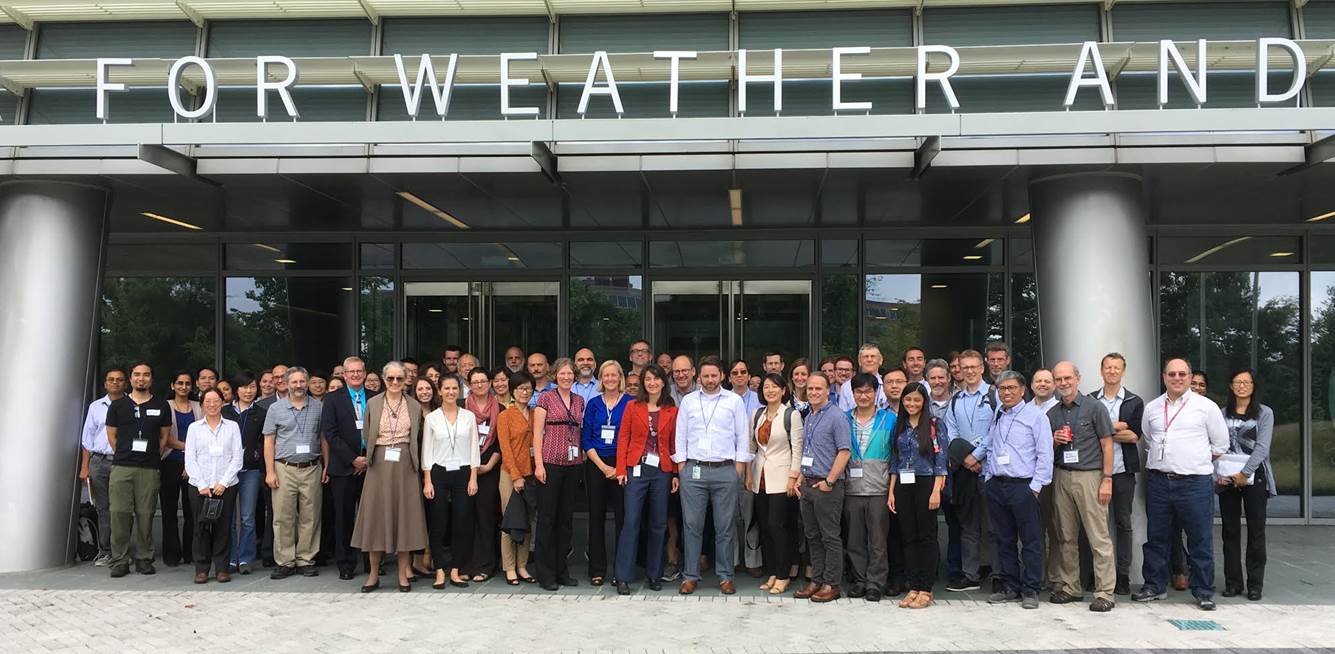|
The NMME/SubX Science meeting was held
at the NOAA Center for Weather and Climate Prediction in College Park, MD on
13-15 September 2017. The objective of the meeting is to highlight the
extensive ongoing research into seasonal and subseasonal climate prediction,
using retrospective and/or realtime forecast data from the North American
Multi-Model Ensemble (NMME) and Subseasonal Experiment (SubX). Succeeded
from NMME, the SubX project expands the interagency effort to subseasonal
prediction research to test individual and multi-model ensemble predictions
at timescales of weeks 3-4 and beyond through interaction between
participant research teams.
The meeting started with a presentation entitled "Who cares about S2S
research to improve forecasts?", showing a broad spectrum of end users
across a wide variety of applications, such as agriculture production,
utility planning, water resource management, fishing industry operation,
public health surveillance, etc. Oral and poster sessions presented progress
reports of systematic research efforts to improve prediction skill and
reliability, which are summarized as follows.
-
Evaluate subseasonal prediction skill,
focusing on major influencing systems, i.e. MJO, atmospheric
blocking, monsoon, ENSO, NAO, etc., and forecast variability
among different models (i.e., NCEP GEFS, Canadian GEPS,
GEM-NEMO Coupled Model, NCAR CCSM4, ESRL/GSD Global FIM-iHYCOM
Coupled Model, GFDL FLOR coupled model, NASA-GMAO's new S2S
forecast system v. 2.1, Navy Earth System Model (NESM),
etc.). Multi-model ensembles largely removed negative skill
scores presented in individual forecasts. The comparison of
numerical and statistical/analog approaches was also
conducted. Experiments using ECMWF VarEPS and NCEP CFSv2
showed week 3+4 forecasts had more skill along the US east
coast and the southwest US in winter, as well as over
west/central US regions and the Intra-American Seas/east
Pacific during summer.
-
Assess subseasonal
predictability, placing emphases on the fidelity of
predictability estimates, influence of ocean-atmosphere coupling
and SST biases, sources of systematic biases, room for forecast
skill improvement of global SST anomalies, systematic SST biases
correspondence between short- and long-time-scale,
predictability of North American drought,
stratosphere-troposphere coupling and Northern Annular Mode
(NAM) predictability, etc.
-
Improve prediction
systems and products, including MME using objectively determined
weights, Calibration, Bridging, and Merging (CBaM), UM/NOAA
subseasonal excessive heat outlook system (v2), IRI real-time
probabilistic seasonal forecasting, intraseasonal prediction of
tropical cyclones, probabilistic prediction of short-term
climate extremes, pattern-dependent bias correction and
downscaling, prediction of atmospheric rivers, storm track
activity, forecast of North Atlantic and U.S. land-falling
tropical cyclones, streamflow forecasts, water deficit
forecasting, etc.
-
Stand up to the
challenges and prospects, pointing mainly to predictability of
MJO, Initialization of dynamic vegetation and land soil
moisture, Arctic sea ice predictability and forecast, etc.
For more information, see oral and poster presentation abstracts and files
at the meeting web site
https://cola.gmu.edu/kpegion/nmmeworkshop2017/index.html, where the
meeting report is getting ready for public access in near future.
|





